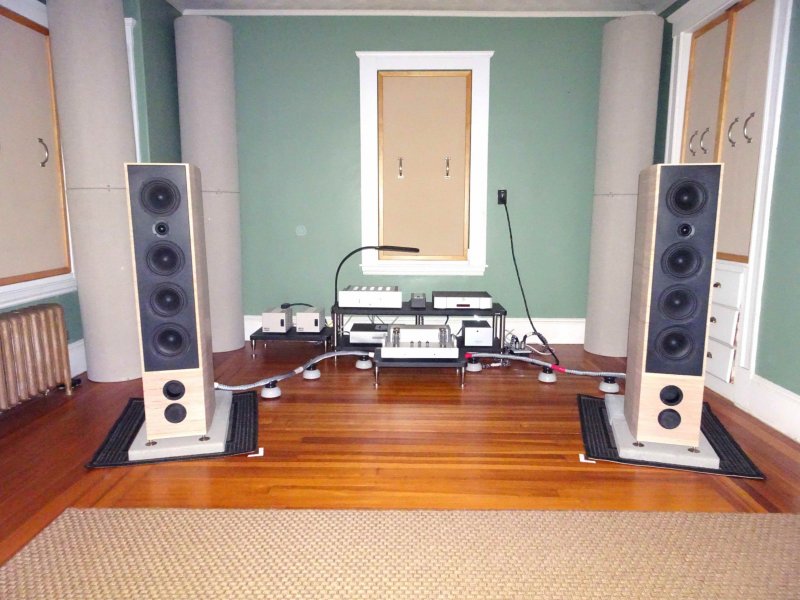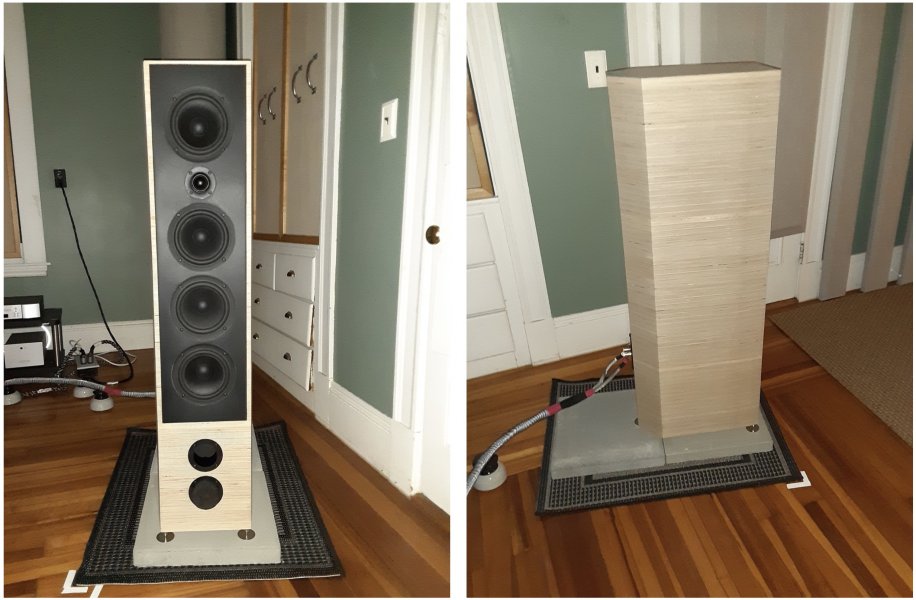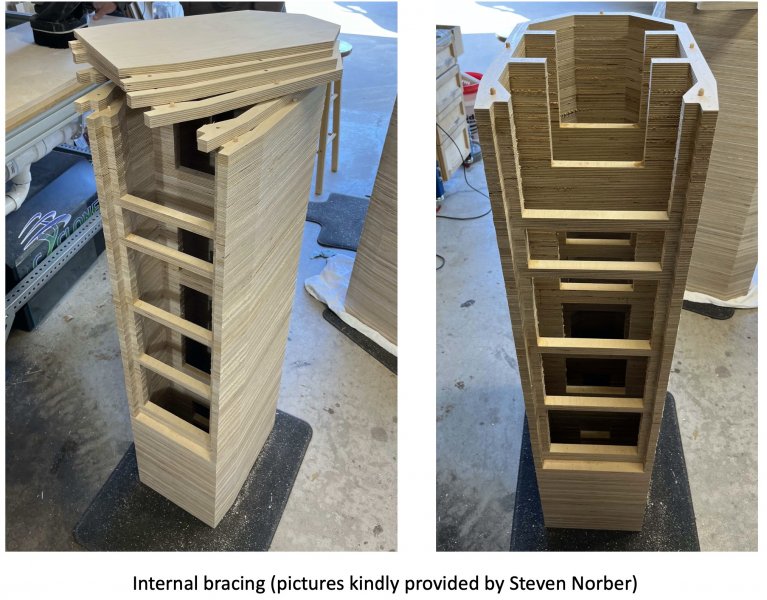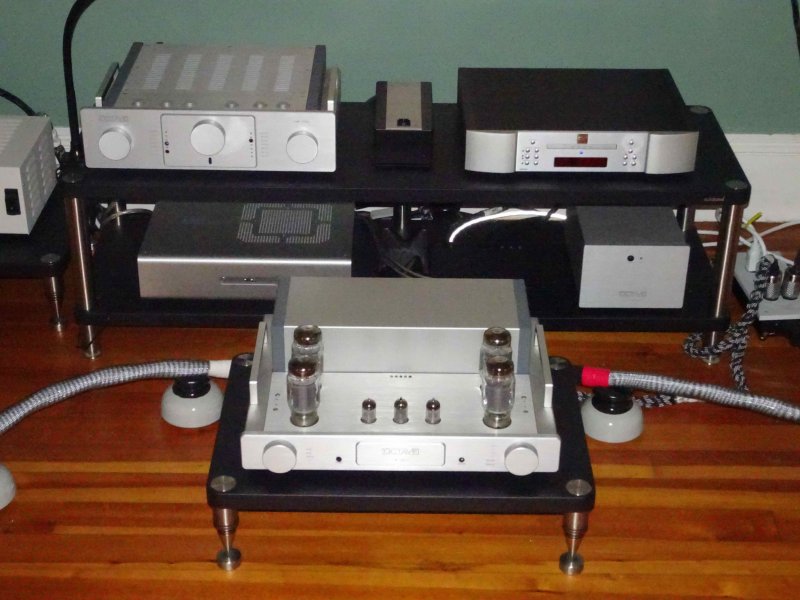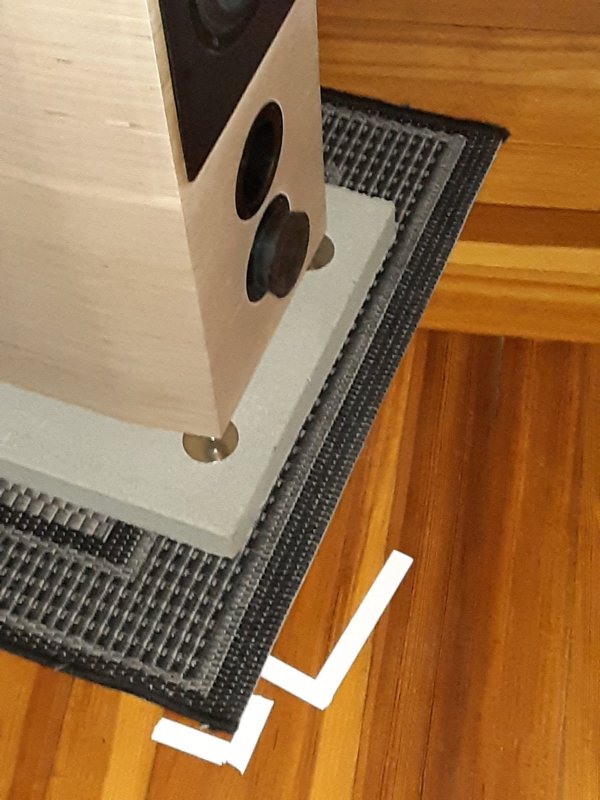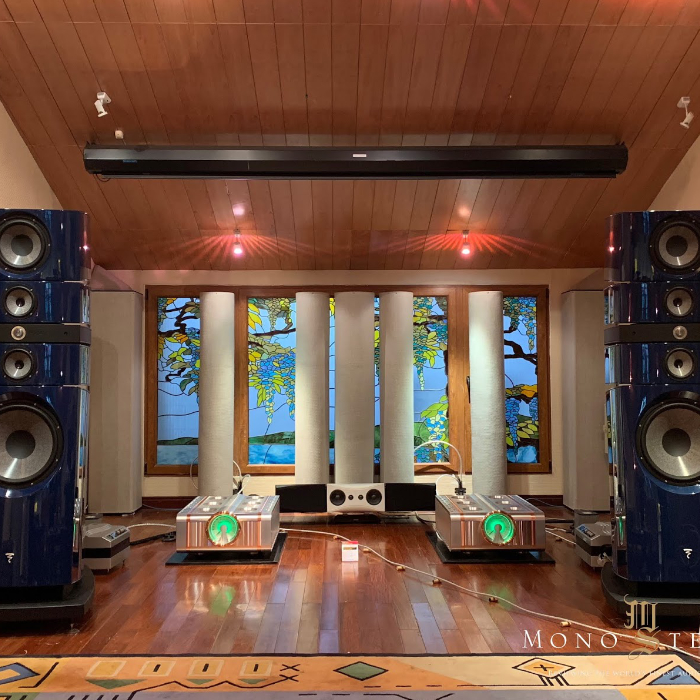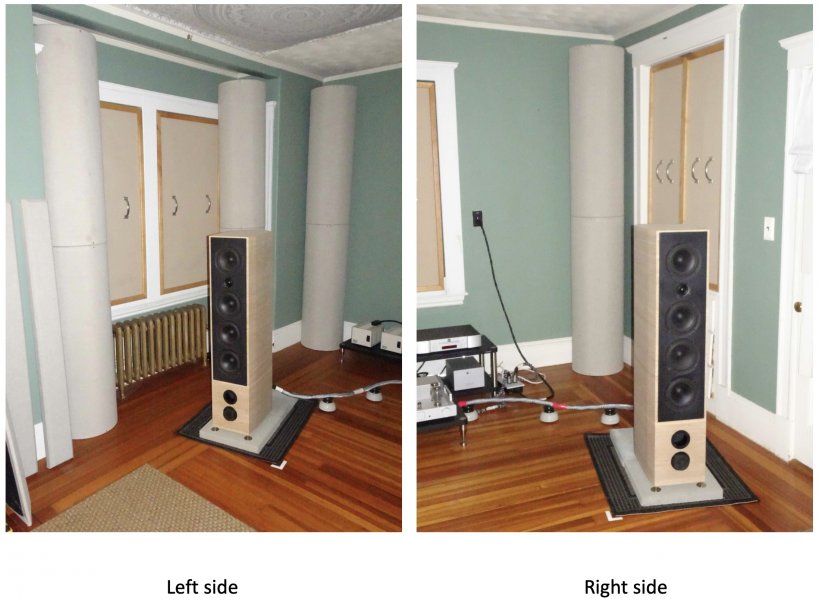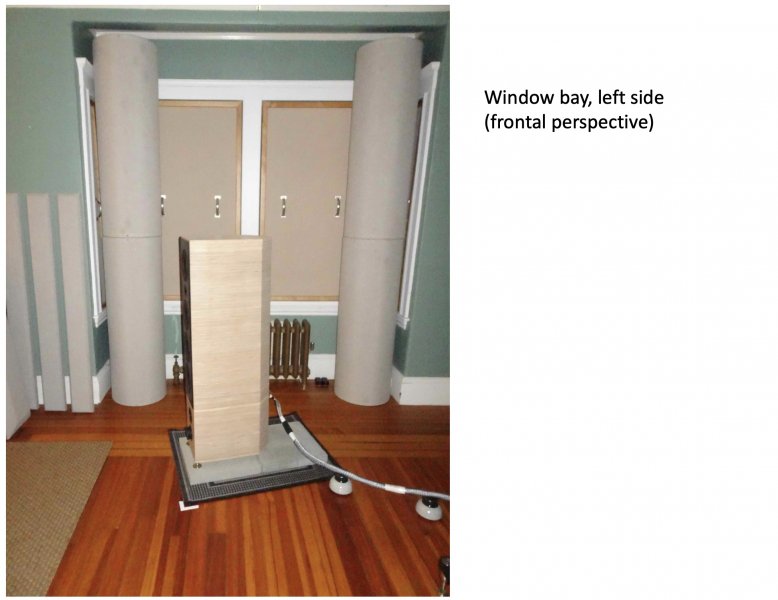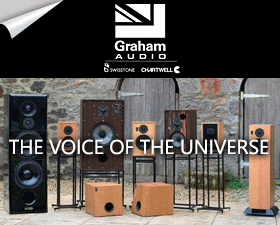(cont.)
Now I am very satisfied with both quantity and quality of the bass, and the left hand low register of piano sounds great without any “boxiness” (for all this, see below).
It is clear that the overly prominent bass that I had without extensive room treatment with TubeTraps is not an inherent problem of the speakers themselves, but one of my room. At T.H.E. Show the speakers produced great bass in that not so large hotel without any bass traps. The ports used were the same as in my speakers. Bass was never overblown, and in general satisfyingly rich.
As for optimizing speaker positioning, this has been greatly helped by the ability to move the speakers easily.
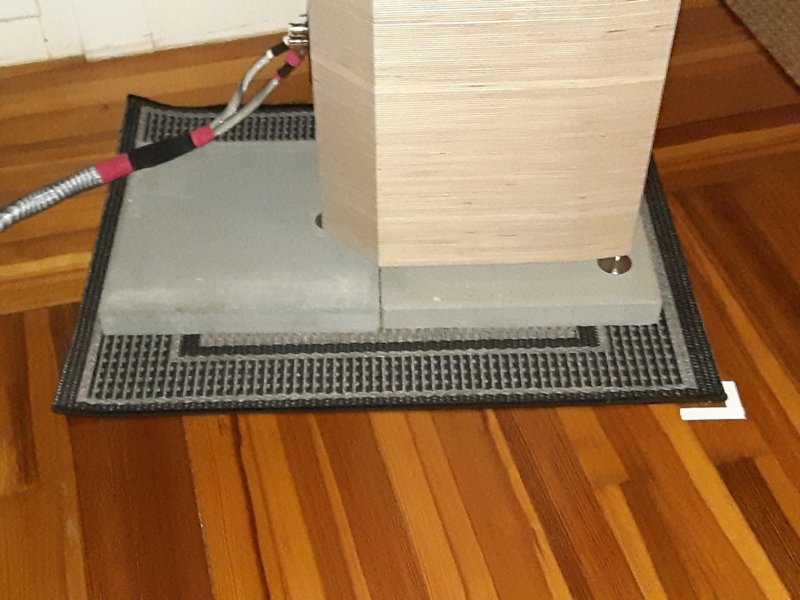
The picture above shows the contraption that enables this. Each speaker is on concrete blocks that sit on a small polypropylene carpet; you can simply grab the carpet with both hands (either on the side or left and right of the speaker) and slide the speakers over the wood floor; takes a few seconds each operation.
Not that much force is needed, as the speakers are only a hundred pounds each and the two concrete blocks under each speaker are about 70 pounds together. A moderate-strength pull on the carpet with both hands, which never puts excessive strain on the body, gets the speakers moving. I haven't detected any wear on the wood floor either.
Moving the speakers back and forth was within a confined stretch of 8 or 9 inches total (I know the general area where speakers sound good in my room). Most moves were between 1 and 2 inches each time, followed by listening to very different music genres and recordings at each step. An interim speaker position was revised after additional helpful comments by Vlad (VLS) during his visit to hear the system. Once I got closer to the final position, moves were in much smaller increments, fractions of an inch.
While working on set-up, I also auditioned new speaker cables, the SCR-11 (copper) and the SSR-11 (silver) from ZenWave. The Dhyana speakers easily let you hear the greater resolution and precision of the silver cables, and I chose those as worthy companions for the speakers, even though the copper cables are very good in themselves (Steven also used copper cables, from Furutech, at T.H.E. Show for his speakers).
In the current configuration, the distance between ear and tweeter is 8.3 feet, and the distance from speaker front baffle to the front wall is 7.6 feet, allowing for good reproduction of spatial depth. The distance from the front baffle of the right speaker to the side wall is 2 feet (the left speaker is further away from its side wall due to the small window bay).
In terms of adjusting tonal balance by toe-in, I am inclined to stay on the side of in relative terms somewhat less HF energy, since that is how unamplified live music tends to present itself (more or less so; the details are a bit more complicated). I adjusted toe-in up to the tipping point where the great transparency of singing voices on these speakers was slightly diminished, and dialed away again from that tipping point just a notch. At this level of toe-in there are still plenty of highs, and no ostensible “roll-off” is evident, at least to my ears. The sound also passes the ”triangle test” – triangle still has a satisfying sparkle and sheen.
The speakers also have 3 adjustment levels each for treble extension and midrange character by simple toggle switches on the back.
The treble output is adjustable in three steps, which make an easily audible, significant, yet not excessively pronounced, difference. I chose to keep the frequency curve at the flattest level, also during all my experiments on speaker positioning, but other users may find the other available positions helpful in their rooms.
The midrange character is adjustable through different resistors of the same value, but of varying type. These resistors are part of the crosover circuit desgned to stabilize impedance. For examples of what to expect, on one track of solo violin the instrument slightly moved forward in the ‘presence’ setting, and in the ‘warm’ setting, rather than the ‘default’ setting, the tone very slightly moved from a more silvery to a more wooden character in the highs. On piano, the transients from the hammers striking the strings became slightly less pronounced in the ‘warm’ setting compared to ‘default’ mode. Yet the difference between the settings is subtle, and does not amount to pronounced character changes in the speakers’ presentation. The audible difference between the settings may also depend on the room acoustics. I prefer the balanced clarity of the ‘default’ position on everything, but you really cannot go wrong. All the changes in character are within the spectrum of how live music can sound; therefore the choice of setting becomes a mere matter of taste. For some people their default position will be the ‘presence’ or the ’warm’ position. It is nice to have the option, for sure, and you could even adjust between recordings with an easy toggle switch if desired.
I usually listen at a more realistically loud volume, with peaks on orchestral music up to 100 dBC (in rare cases, beyond), as measured by a Reed factory-calibrated SPL meter. No worries, I do protect my ears; I give me ears breaks during longer listening sessions and follow NIOSH recommendations:
NIOSH established a recommended exposure limit (REL) of 85 A-weighted decibels (dBA) averaged over an eight-hour workday. Workers who are exposed to noise at or above the NIOSH REL are at risk of developing significant hearing loss over their working lifetime.

www.cdc.gov
(Note: these recommended values are measured in dBA, which is weighted towards higher frequencies that are most damaging to ears, and the corresponding dBC numbers are often much higher; I check the dBA levels on my Reed SPL meter as well.)
The experience that the speakers can play cleanly and effortlessly as loud as they can, as I will report, is in my room also facilitated by minimization of room distortions which otherwise would prohibit clean reproduction at loud volume. A carpet in the listening area, ASC window plugs, TubeTraps, Tri-panel diffusers, Sound Plank diffusers and (not shown) ceiling diffusers/ceiling cloths all contribute to taming unwanted reflections. Of course, the electronics need to provide a clean signal as well (importantly, competent audiophile power cords as I have them play a role here).
While the speakers can effortlessly play loud, they also sound lively at low to very low volumes, in line with them actually being speakers of rather high sensitivity. Late night listening without disturbing someone will be engaging.
